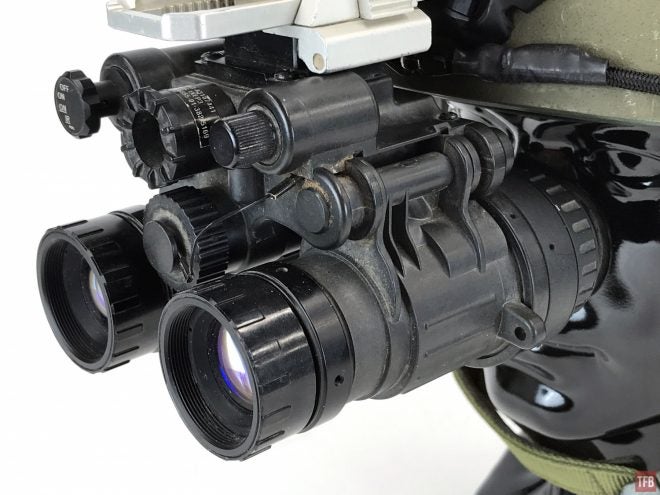This week on Friday Night Lights we have another installment of Dual Tube Spotlight. Today we will take a look at a particular binocular housing that has a small foothold in the night vision market. Night Vision Devices makes Binocular Night Vision Devices (BNVDs) and we will focus on the BNVD-SG.
BNVD-SG Close Up

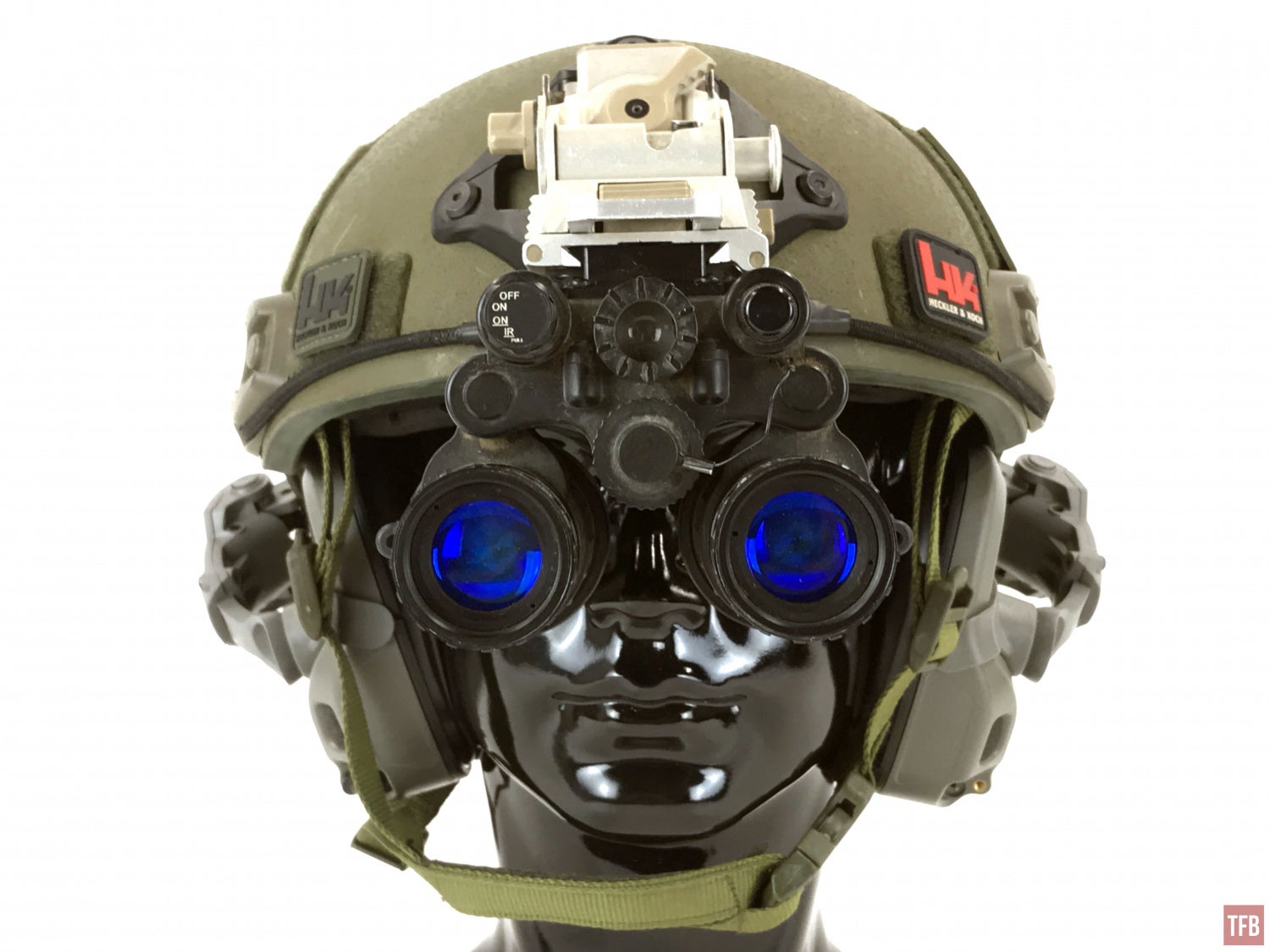
The BNVD-SG design predates other articulating binocular devices. Night Vision Devices has been building night vision since 2005. The closest similar device would be the PVS-15. The PVS-15 was a solid device for a binocular system but it has limitations. For one, the PVS-15 does not have manual gain. PVS-14s have manual gain and switching to dual tube without manual gain can be a concern for some. The BNVD-SG is single gain, meaning there is a central gain adjustment knob that controls the gain for both image intensifier tubes.
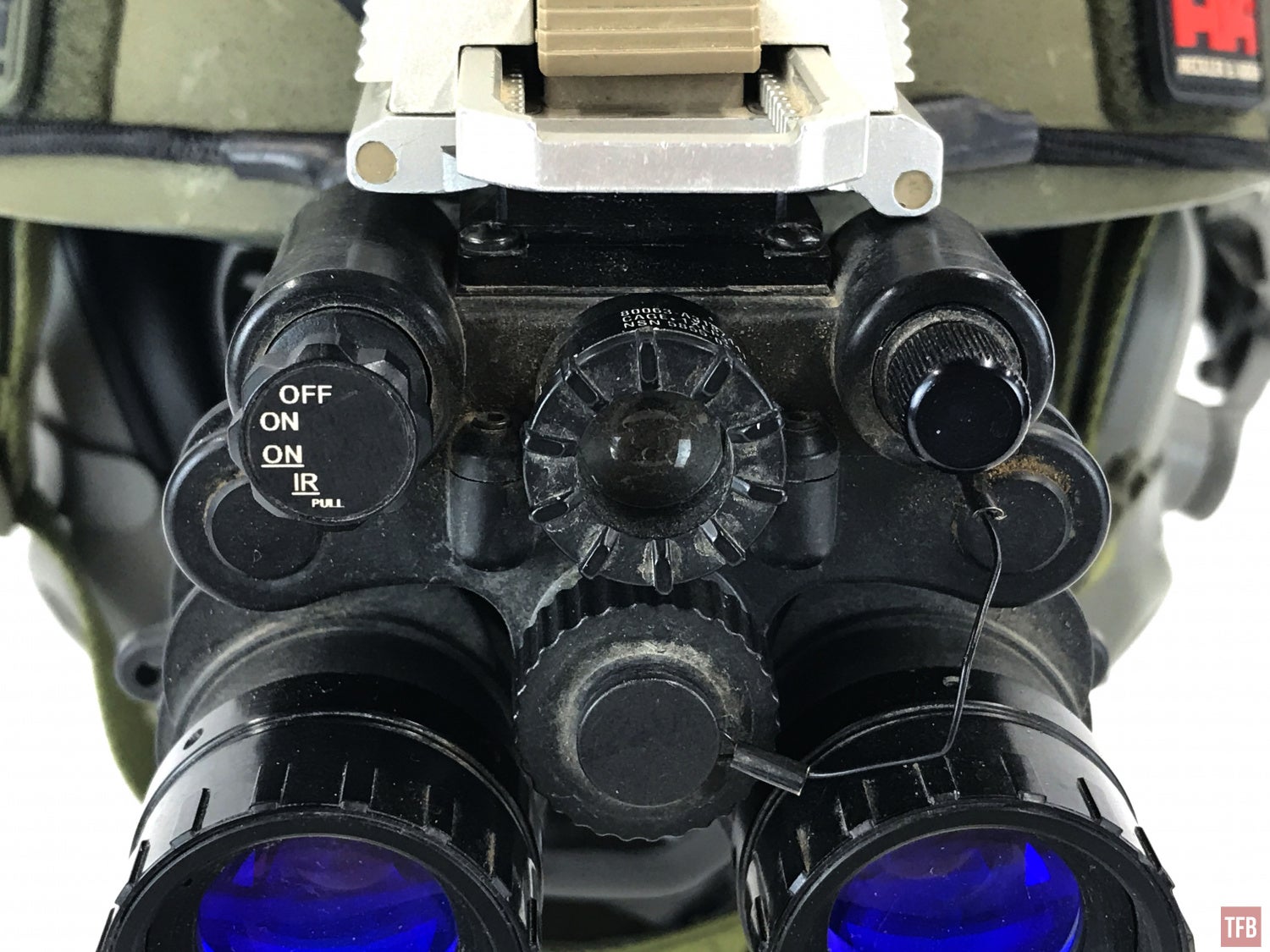
Left to Right: On Switch, IR illuminator, and manual gain knob. Below the IR illuminator is the AA battery cap.

The manual gain knob is forward-facing and sits on the left-hand upper corner of the bridge, opposite of the On Switch.
Below are variant BNVDs by Night Vision Devices.
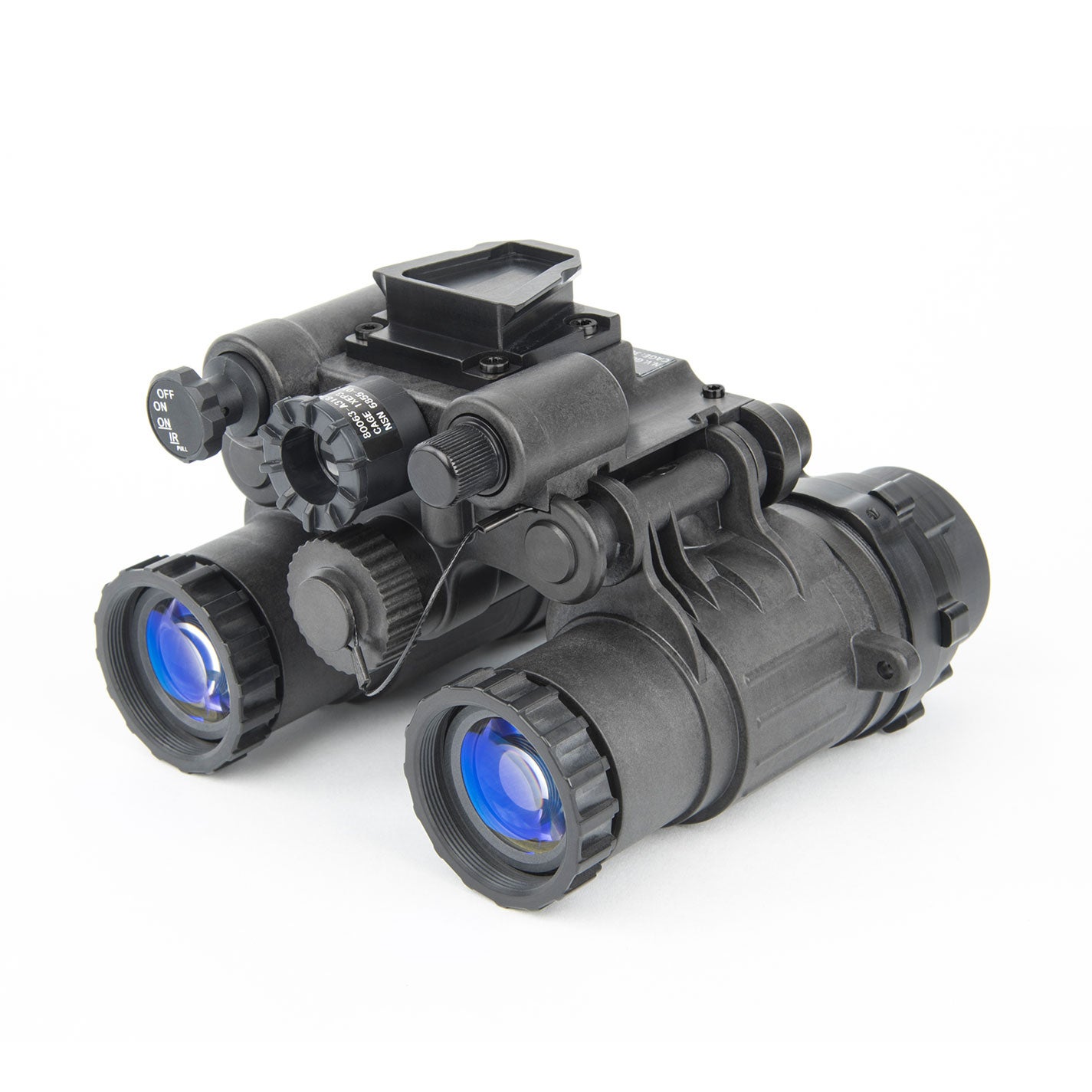
BNVD-SG UL Photo by NV Devices
The BNVD-SG UL is their ultra-lightweight variant. They claim it only weighs 475 grams or 16.75 ounces. The objective lenses and eyepieces are different and lighter weight than the PVS-14 style glass. The regular BNVD-SG with PVS-14 glass weighs around 560 grams/19.8 ounces without battery.
Below is the BNVDG. It is a dual gain housing.

Photo by NV Devices
You can see these strange looking lobes on each monocular pod. The manual gain knob faces rearward and there is one knob for each tube. While you have to adjust each tube gain individually and manually you can adjust them to your eyes and lighting scenarios. This helps if you have a COTI and need to adjust manual gain in the tube but the other side does not need to be adjusted.
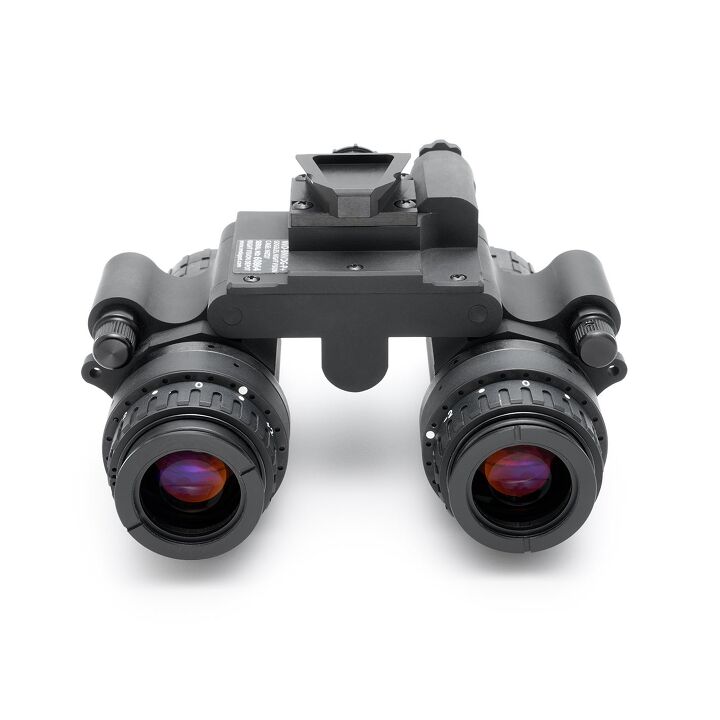
Photo by NV Devices
All the BNVD housings by Night Vision Devices share a similar bridge, some have a manual gain knob and others do not.
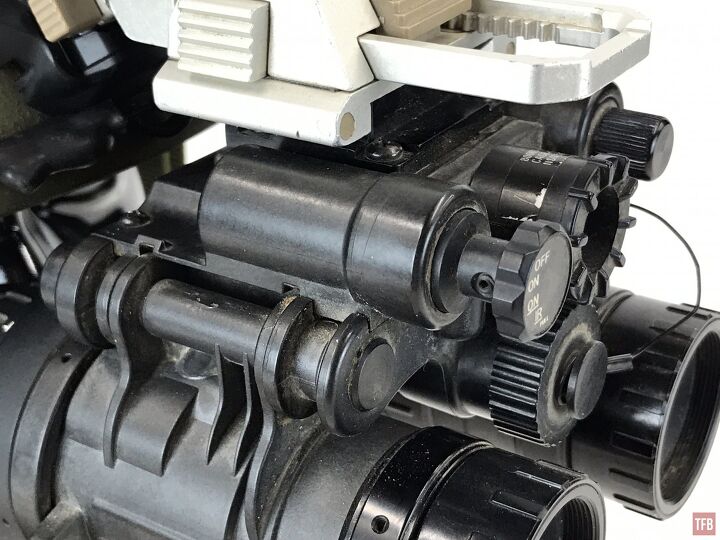
The On Switch for the BNVD-SG is similar to the PVS-14 and other night vision devices only this one has four positions. It has two ON positions. The second ON position activates the auto shut off mode. The BNVD-SG will shut off when it is oriented vertically like when you flip the mount up. If the BNVD-SG is oriented facing downwards it will shut off as well. If you do not want the automatic shut-off feature, then select the first ON position. The IR illuminator activation is the same as in the PVS-14 – pull the On Switch out and continue turning.
The BNVD-SG has a Night Vision IR Spot Flood lens assembly installed from the factory. This is a simple lens that you twist, similar to a Maglite head, to focus the IR illuminator from a flood beam to a spot light.

IR Spot
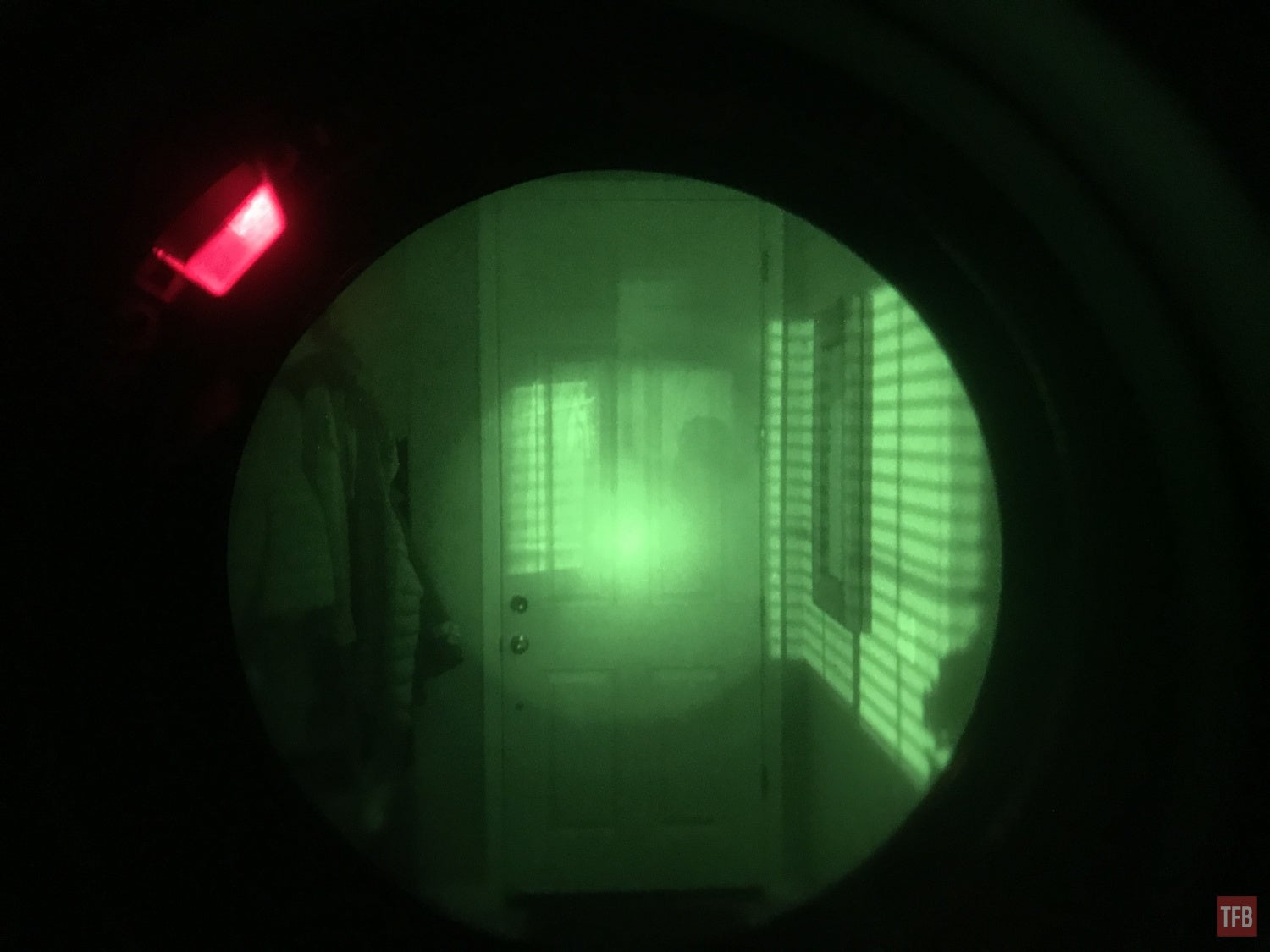
IR Flood
The IR illuminator is not that powerful and it is only good for extreme low light areas where there is little to no ambient light.
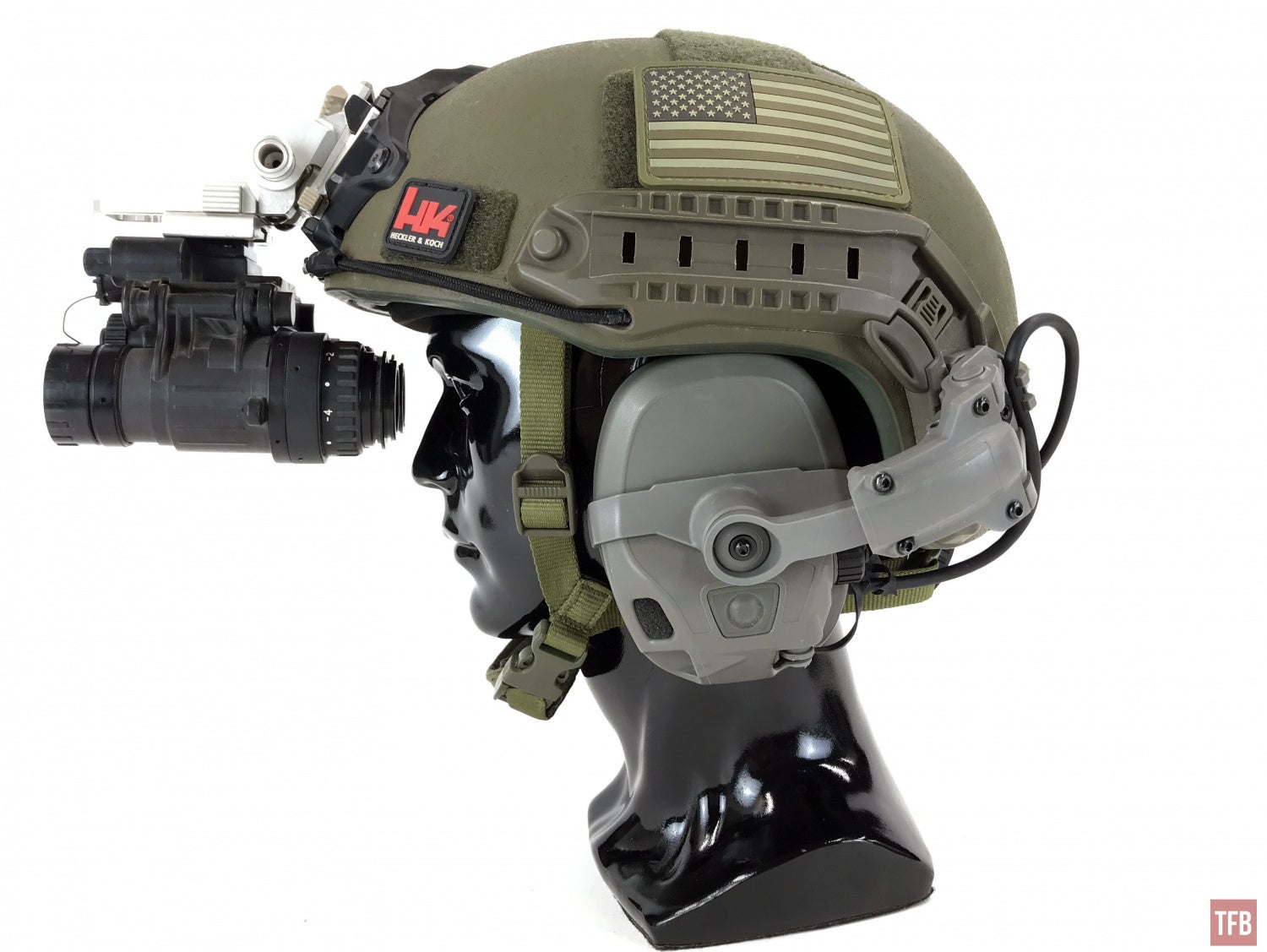
The BNVD-SG is an articulating Bino so you can roll the monocular pods inwards toward the helmet. Nocorium has a good graphic to help illustrate this issue.

Photo by Nocorium


One of the problems with the PVS-15 is their limited range for the articulating monocular pods. The BNVD-SG can articulate past 90º. Thus bringing the bulk of the BNVD-SG weight closer to your helmet making it much more comfortable to wear in the stowed up position.

While the BNVD-SG can auto switch off when the housing is oriented vertically, the monocular pods do not shut off when you roll them up.
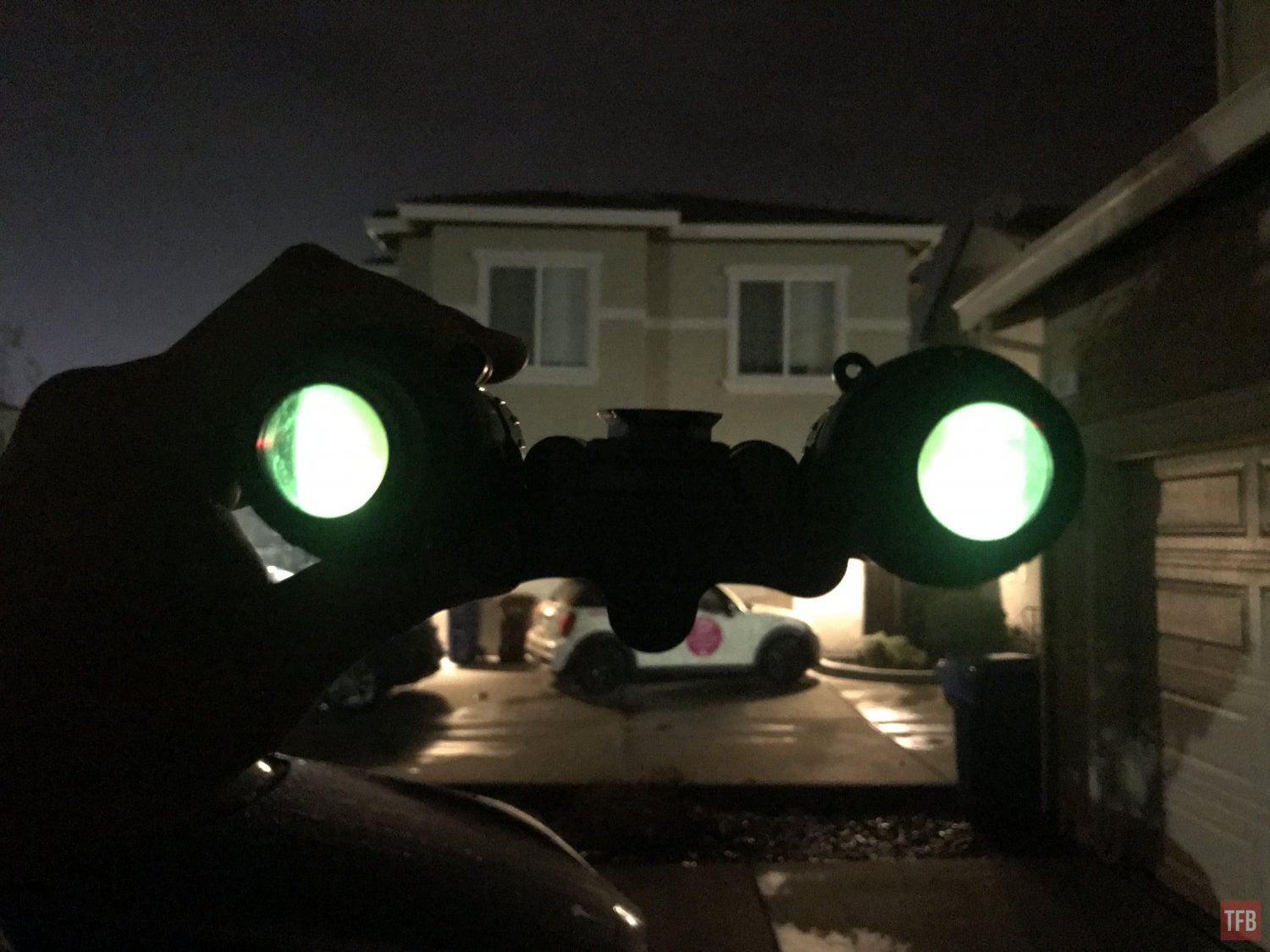

Like the BNVD-1431, the BNVD0-SG is powered by a single AA battery. According to Night Vision Devices, the BNVD-SG will stay on for 40+ hours on a lithium AA battery. That is very good. A DTNVG with CR123 only stays on for 25 hours.

On the side of each monocular pod is an anchor point to hook your helmet bungees onto each pod.
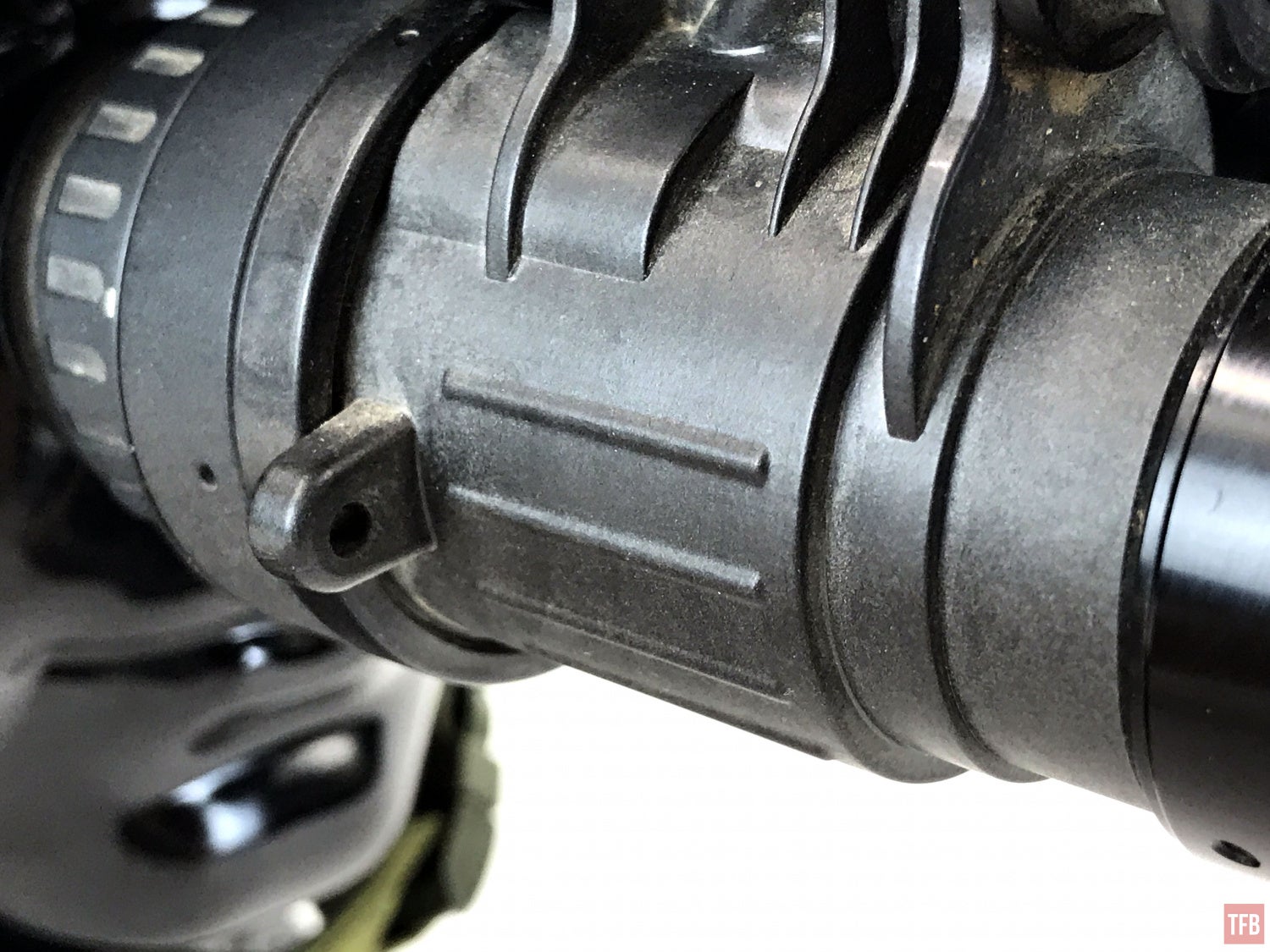
BNVD-SG Wrap Up
The BNVD-SG was a great option for an articulating night vision housing back when PVS-15, Sentinels, and ANVIS6/9 were the only option. However, with current night vision binocular housing offerings like the DTNVG, BNVD-1431 and the PVS-31A, the BNVD-SG or its variants do not really offer much more to set it apart. I am not a fan of the “height over bore” or in this case how tall the dovetail sits above the objective lenses and eyepieces. It is very tall just like a PVS-15 and PVS-31/1431. This means I have to adjust the height of my NVG mount as high as possible to bring the eyepieces into my line of sight.
Aside from comparing features with the competition, there is one issue I have with the BNVD-SG and it is the fact that Night Vision Devices only sells it as a complete unit. They do not sell the housing separately. I would prefer to buy the housing and install the tubes that I want rather than have them sell me their tubes at a premium. I am interested in the lenses they use in their BNVD-SG UL and see how well those lightweight optics can drop weight in other housings. The BNVD-SG starts at around $8500 for commercial-spec tubes. That is a bit pricey, especially when you have companies like Steele Industries selling brand new RNVGs with ITT Gen3 F9800RG tubes for only $4600. Yes, a complete binocular with green phosphor Gen 3 night vision for $4600. Unfortunately, that was a Holiday Special and they are sold out.
For more information on the BNVD-SG go to Night Vision Devices’ website.
A huge thanks to Aaron K. for lending me his BNVD-SG. These will be heading to Nocorium soon to be wrapped.
 Your Privacy Choices
Your Privacy Choices
